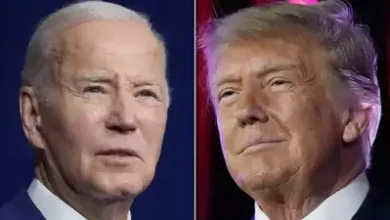Iranian Ethics Here are some notable Iranians who have so far defied the regime as the police return to the streets to enforce the Islamic dress code
A fresh drive to enforce the Islamic dress code has the morality police back on the streets around ten months after Mahsa Amini, 22, died while in the morality police’s care, sparking a month of widespread demonstrations.
Women took part in the demonstrations in great numbers and they lasted for months. In defiance of the Iranian government, women often cut their hair openly, burned their hijabs, and tore off their Islamic head coverings in public. However, after a harsh response by the Iranian government that resulted in over 500 demonstrators being murdered and almost 20,000 being arrested, the demonstrations generally subsided late this year.
Several instances of women going about their daily lives without hijabs and disobeying the Iranian dress code that forbids women from covering their faces in public have come to light despite the downsizing of the demonstrations.
According to the Associated Press, Gen Saeed Montazerolmahdi, a police spokesman, said on Sunday that the morality police would once again notify and detain women who were not wearing hijabs in public. He also said that they could be seen patrolling the streets of Tehran in marked vans.
After the Islamic Revolution of 1979, the Iranian government made the hijab a requirement for women’s attire. Women are compelled to cover their heads in public, in accordance with the Iranian dress code, using a hijab. Additionally, they are not permitted to dress in anything too exposing or that is too tight. Men and women cannot mix in public without following rules. The Iranian government carries out these actions in the name of Sharia, an extreme application of Islamic law.
These modifications were made after the 1979 overthrow of the liberal, pro-Western Iranian monarchy by the fundamentalist Islamic clergy. Women were free to wear the hijab or not for many years throughout the Iranian monarchy, which lasted until 1979. Photos from the same era also show women wearing swimwear and skirts.
The morality police would “issue warnings and then introduce to the judicial system people who unfortunately insist on their norm-breaking behavior without concern for the consequences of their covering that is outside of the norm,” according to Montazerolmahdi, who was quoted by Al Jazeera.
The greatest threat to the Iranian government emerged from the demonstrations that started following Amini’s passing last year. The morality police apprehended Amini, a Kurdish woman, as she was out with her brother allegedly in breach of the Islamic clothing code. She subsequently passed away following claimed abuse in custody.
“Last October, the conflict over the hijab turned into a potent rallying cry, with women taking the lead in the demonstrations. The primarily youthful demonstrators swiftly turned into demands for the fall of Iran’s religious authorities, whom they accuse of being dishonest, oppressive, and out of touch. Without offering any supporting information, the Iranian leadership claimed that the demonstrations were the result of a foreign plot.
According to an Al Jazeera article, monitoring has been used by the police recently to clamp down on legal violations. Several women have started going about their lives bareheaded in recent months as individual acts of defiance against the Iranian government.
According to Al Jazeera, “businesses have also become increasingly targeted, with many cafes, restaurants, and even large shopping malls facing closure for providing services to women wearing loose hijabs.”
Several well-known Iranians, including actresses and athletes, joined the rallies in addition to the thousands of ordinary Iranians, and “Women, Life, Freedom” became their rallying cry.
After appearing in public without the hijab or expressing sympathy for the rallies, some Iranian actresses were imprisoned. AP said that in the most recent instance, actress Azadeh Samadi was “banned from social media and ordered by a court to seek psychiatric therapy for ‘antisocial personality disorder’ after attending a funeral two months ago while wearing a cap.
Several athletes have already explained the hijab legislation or shown support for the demonstrators.
According to Reuters, prominent Iranian chess player Sara Khadem was forced to relocate to Europe after taking part in a competition overseas while without wearing a headscarf.
Atousa Pourkashiyan, an Iranian chess player, also competed overseas while without wearing a headscarf.
Iranian climber Elnaz Rekabi participated in a competition in South Korea in October without wearing a headscarf.
The hashtag “Women, Life, Freedom” was used by an Iranian basketball team to upload a picture of themselves without the hijab in November.
Niloufar Mardani, an Iranian skater, accepted a prize in Turkey without wearing her headscarf in November.
Shervin Hajipour, an Iranian artist, most recently won the 2023 Grammy Award for Best Song For Social Change in February. According to the Grammy website, he received the prize for his song Baraye, which over 40 million people listened to in less than two days.
Following Amini’s death in September of last year, the song Baraye by Hajipour was adopted as the unofficial anthem of the Iranian women-led rallies. Jill Biden, the first lady of the US, declared him the winner. She described the song as “a powerful and poetic call for freedom and women’s right” while announcing the prize.
According to her, this song served as the Mahsa Amini demonstrations’ anthem and was a powerful and eloquent plea for women’s rights.Despite Shervin’s detention, the song’s stirring message of “women, life, and freedom” continues to be felt globally.
Mahlagha Jaberi, an Iranian-American model, donned a garment with a noose neck at the Cannes Film Festival in May to draw attention to executions in her native Iran.
She said on Instagram, “We wanted to create a fashion statement to notice Cannes’ glitz, but more significantly, to raise media attention to the illegal killings of Iranian citizens. The security prevented me from displaying the back of my garment since political comments are not permitted at the film festival, but the meaning of the word “noose” was clearly understood.







